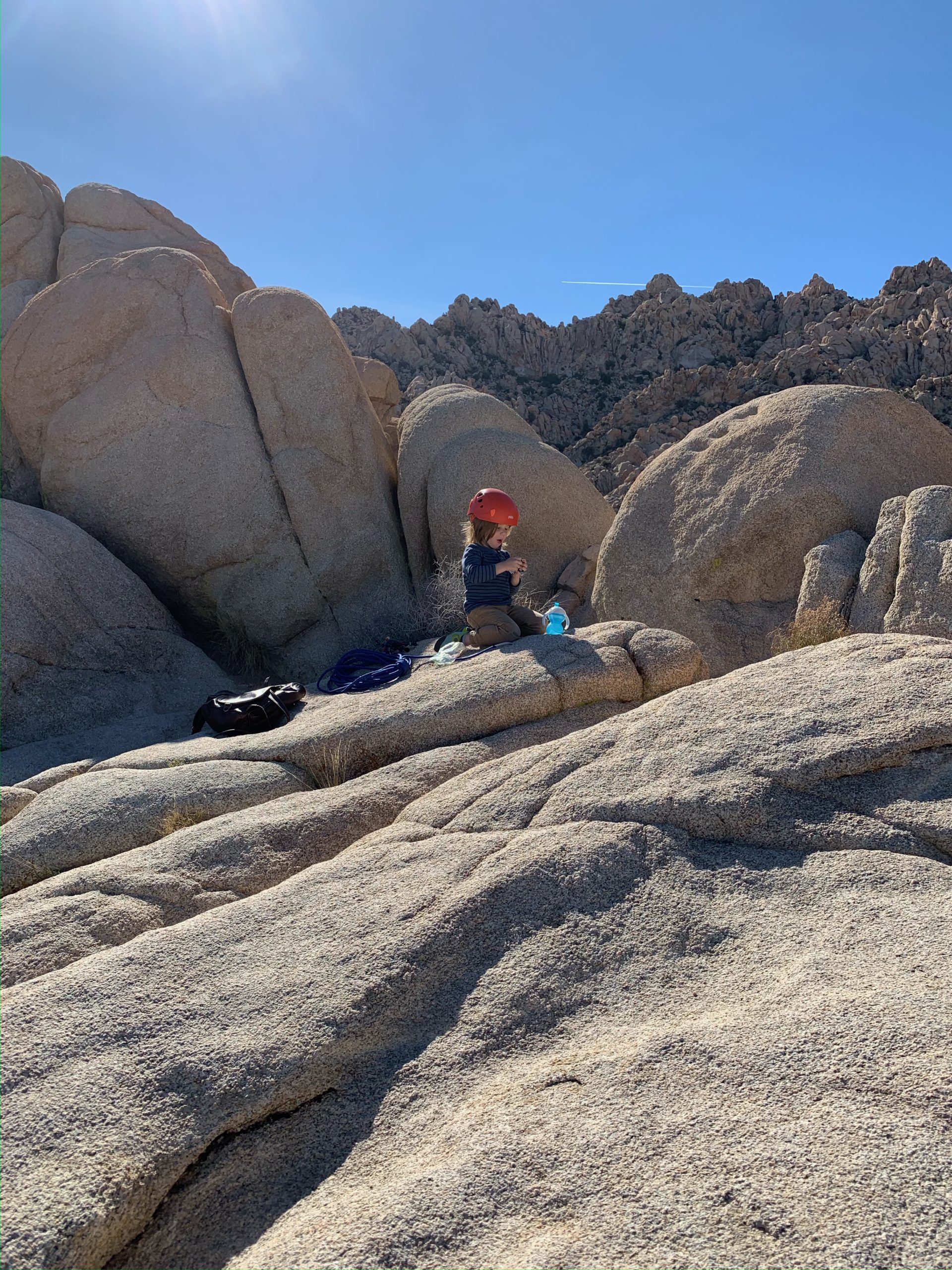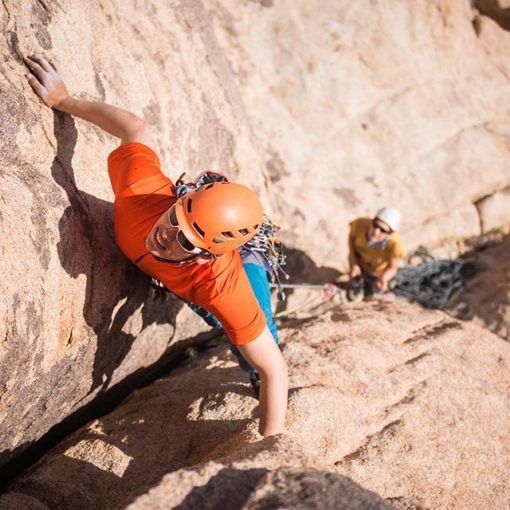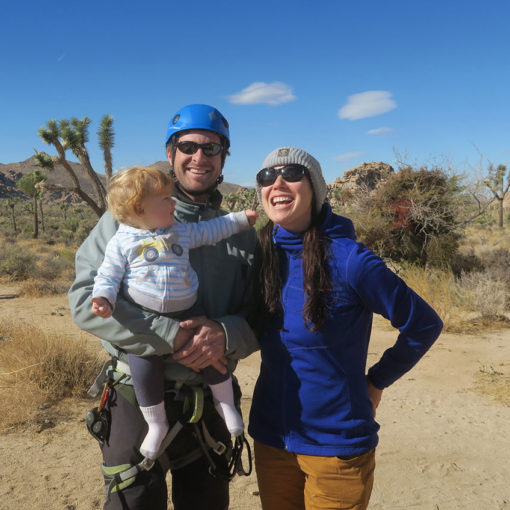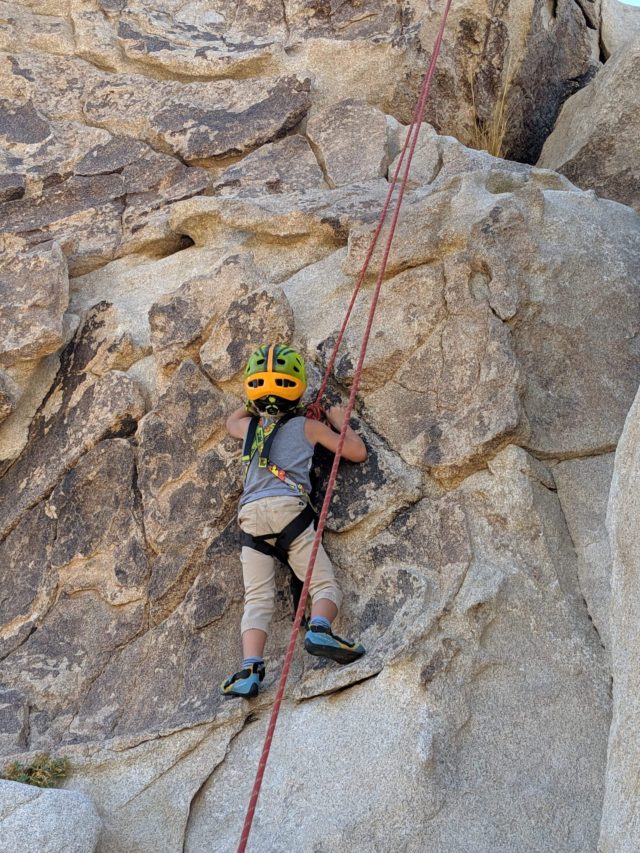
For kids coming out to climb for the first time we recommend the 4 or 6 hour trip. The rock is rough and only people with callouses on their hands from climbing can reasonably hope to climb a full day on the granite in Joshua Tree National Park.
The full (8 Hour) Trip is great for people who climb regularly outside or in a gym. It is also great for families that are comfortable with long hikes (20-30 minutes at a time) and are generally comfortable being outdoors. Read on to find out the benefits of each trip in the context of a family rock climbing trip.
Benefits of choosing a 4 hour trip for kids
Kids who are excited for a rock climbing trip typically hit the ground running. They are bursting with energy at the start of the trip and can’t get enough laps in at the start of the day. The walk to the crag, anchor/rope set up and demonstration take up the first half hour of the day. The kids then practice lowering and warm up on a couple laps of moderate, approachable climbing. This process takes about another half hour or more. The kids are then ready to push themselves and start climbing either a variety of styles, longer routes and/or harder climbs for the next 1-2 hours. At the end of the 3-4 hours, most kids start to wander away from the routes, may even take off their harnesses and start opting for free play. If they were learning how to tie the figure 8 knot for themselves that day, we may see a lapse if their ability to remember how to tie in by themselves at this time. Their strength on the wall often begins to fade. This makes the 4 hour time frame a good stopping point for many families. The kids do more of the climbing at the start of the trip and the parents start taking more turns at the end of the trip. Thereafter, the guide will clean the anchors, pack the rope, and walk everyone back to the cars. The finishing time is usually at a great time for the family to either go to lunch or dinner afterwards.
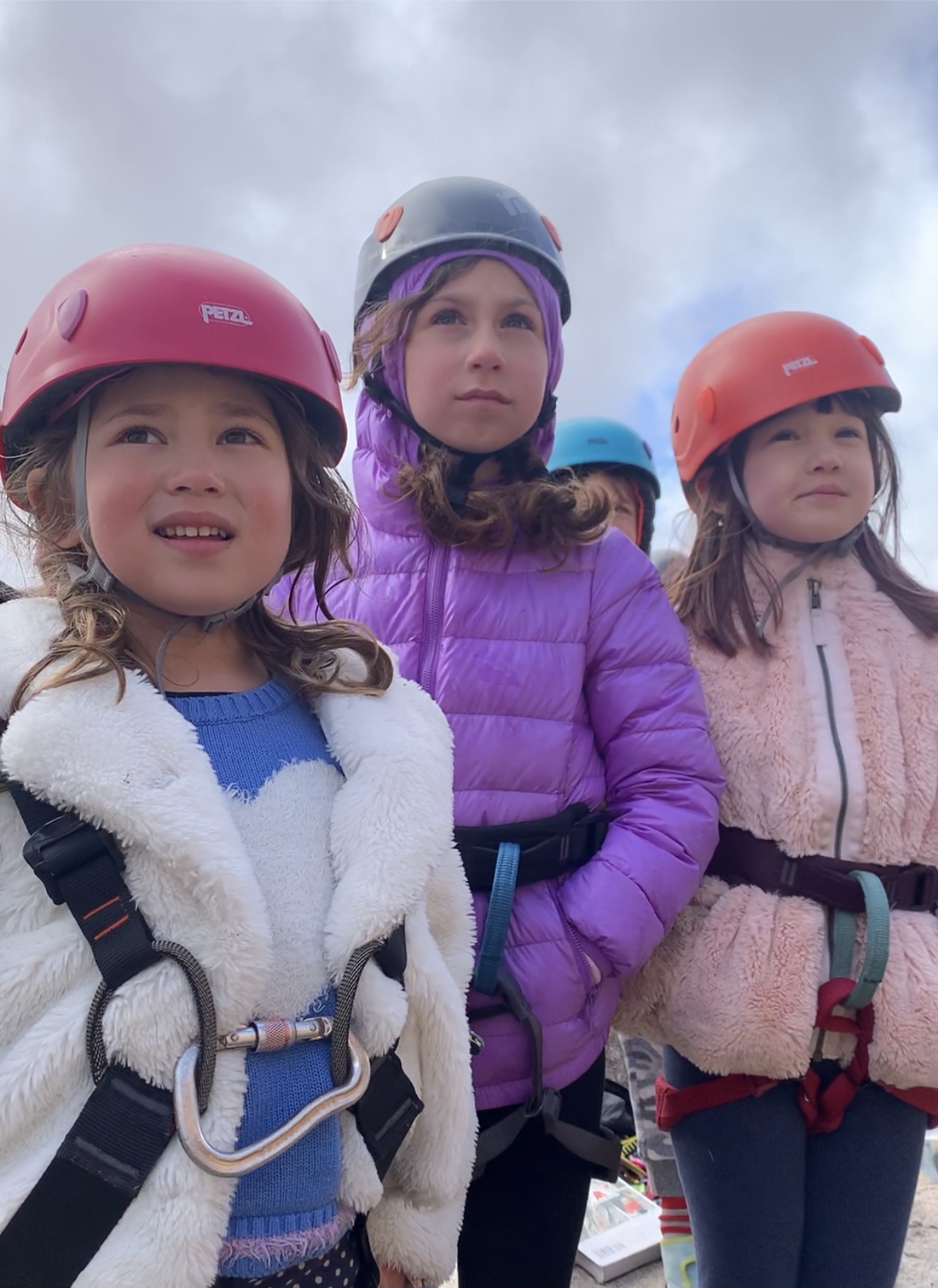
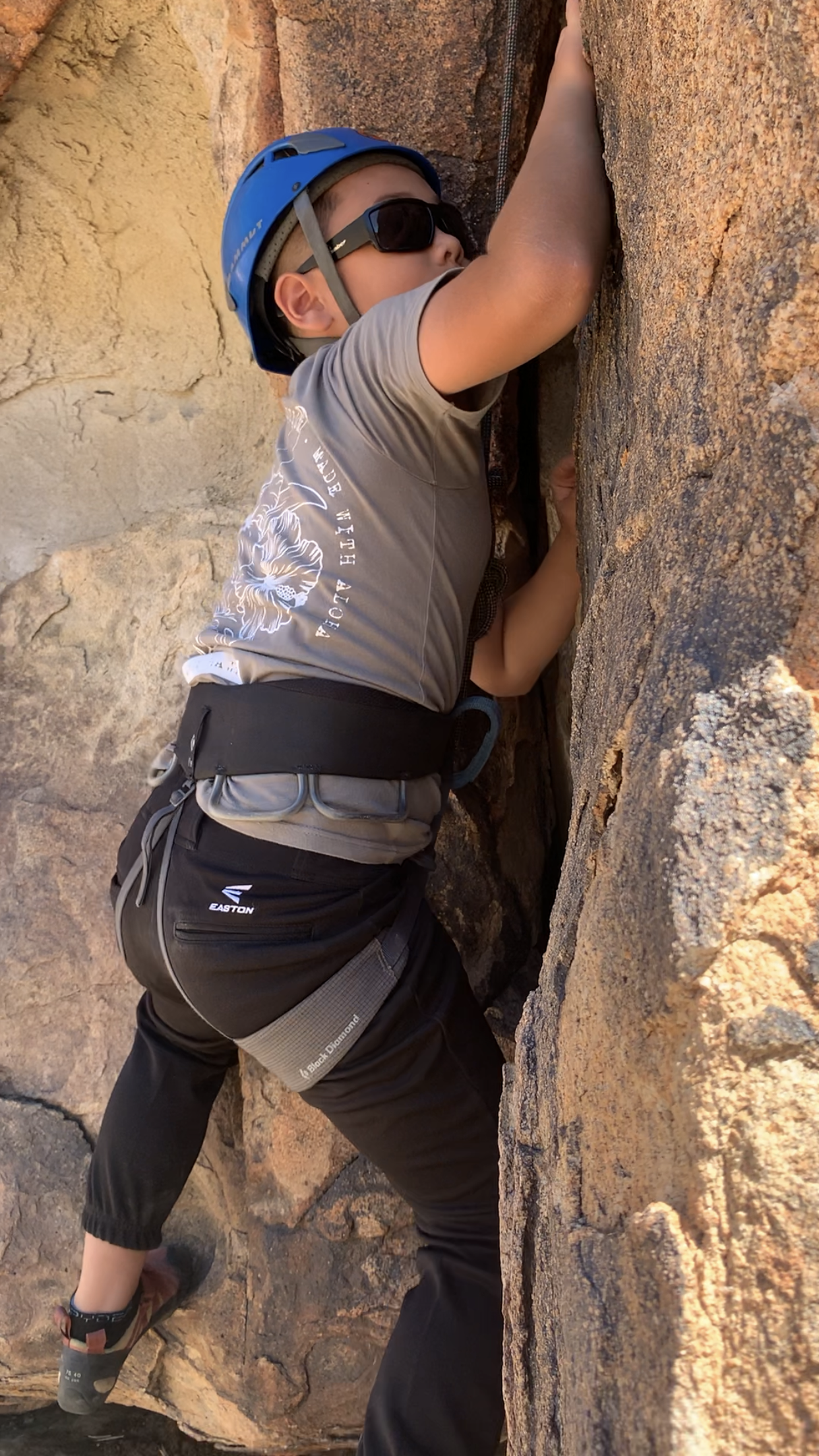
Benefits of a 6 hour trip for kids
During a 6 hour rock climbing trip, the start follows the same general flow as the 4 hour trip (described above). The younger the kids, the stronger they are at the start and the sooner they start to slow down. Around the 3 hour mark, when the kids slow down and the older siblings and parents start to climb more, the younger kids usually drift away into free play. Playing seems to be an important part of kids processing the new experience. While it appears that the kids have lost interest, they are taking in their environment in by way of playing in the sand, looking at the plants, scrambling over short, walkable rocks. This is also a natural time to drink, have snacks, or eat lunch. As their attention for the playing on the ground (and hunger) fades, the kids’ attention returns to the wall. They start watching the older members of the group climb and their interest to try again reignites. However, this time, they are less likely to be splitting at the seams with energy. They come back moving a little slower, more deliberately and with greater knowledge of climbing. Often, this is the time kids get their best climbing in. They have already learned how to climb, lower, practiced a variety of techniques, stepped away from the experience and processed it, refueled with food and water, relaxed, then come back for more routes with less fear, more knowledge, greater trust in the equipment and guide and
climb most efficiently. For families that have active/athletic children, the 6 hour trip is a great option even if it is their first time climbing. It becomes an extended outdoor learning experience and the kids may surprise themselves and their parents at the end of the day.
Benefits of an 8 hour trip
A full day of climbing is recommended for regular climbers (with callouses on their hands) or very outdoorsy people who want to combine climbing with a longer adventure into the outdoors by hiking a little farther to less traveled areas of Joshua Tree National Park. On a full day, the group will likely visit 2, if not 3 or 4 different crags. Each time the group relocates, the trip is further customized to the climbers’ ambitions and skills. The guide will continue throughout the day to choose routes that best suit the members of the family. Full days are a great way to see more of Joshua Tree National Park, get in a lot of climbs, push personal limits and experience a trip highly customized to each climber’s talents.
